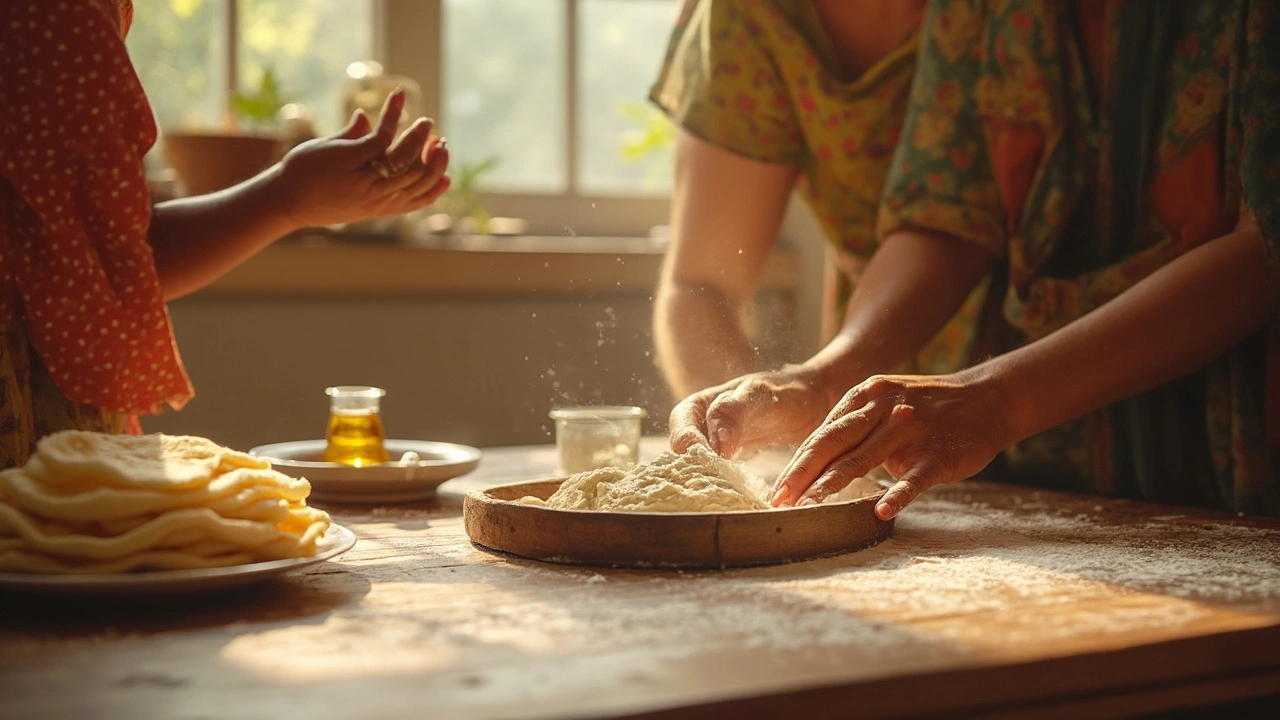Fluffy Roti Recipe
When working with Fluffy Roti, a soft, puffed Indian flatbread that rises like a little cloud on a hot tawa. Also known as puffed chapati, it requires the right dough hydration, gentle kneading and a dash of heat‑timed technique, you’ll find three things matter most: the dough’s elasticity, the leavening agent you choose, and the cooking surface temperature. Fluffy roti isn’t magic; it’s chemistry and practice combined. For example, Roti Puffing, the moment the bread balloons on the tawa happens when steam builds inside a well‑hydrated dough and pushes the layers apart. Add a pinch of Baking Soda, a mild alkaline that creates tiny air pockets during cooking and you’ll see quicker lift, while Baking Powder, a blend of acid and base that releases gas in two stages can keep the roti tender for longer. These ingredients influence texture, but they’re only part of the story – you also need a smooth, rested dough and a scorching tawa to trap steam.
Key Factors for Perfect Fluffy Roti
First, measure flour and water carefully. A 2:1 flour‑to‑water ratio (by weight) gives a pliable dough that stretches without tearing. Knead for 5‑7 minutes until the surface feels silky; this develops gluten, which acts like a spring when heat hits the bread. Let the dough rest at least 15 minutes – resting relaxes the gluten, allowing it to expand easily. Next, decide on your leavening: a pinch of baking soda (about ¼ teaspoon per kilogram of flour) works well if you combine it with a splash of yogurt or a squeeze of lemon juice; the acid activates the soda, creating bubbles that help the roti puff instantly. If you prefer a milder lift, use ½ teaspoon of baking powder instead, which releases CO₂ gradually and keeps the roti soft even after cooling. Remember, too much leavening makes the roti taste soapy, so stick to the suggested amounts. When the dough is ready, roll each ball into a 6‑inch circle about ¼ inch thick. Dust lightly with dry flour to avoid sticking, but don’t over‑flour – excess powder can dry out the surface and prevent puffing. Heat a cast‑iron tawa until it’s smoking hot; a properly heated pan is the third crucial element, because the sudden burst of steam inside the dough pushes it into a puff. Place the roti on the tawa, wait for tiny bubbles to appear, then flip. After the second side browns a bit, gently press the roti with a cloth or spatula; this pressure forces the steam to expand, creating the signature balloon. If you hear a gentle “pop,” you’ve nailed the puff. If your roti stays flat, troubleshoot three common issues: (1) dough too dry – add a splash of water; (2) insufficient heat – let the tawa get hotter; (3) over‑kneading – the gluten may become too tight, so rest the dough longer. These fixes align with the earlier semantic triple that “Fluffy Roti requires proper kneading” and “Baking Soda influences roti texture.” By mastering these steps, you’ll turn everyday wheat flour into restaurant‑quality puffed chapatis that melt in your mouth. Below you’ll find a curated list of articles that dive deeper into each of these topics – from why roti sometimes refuses to puff, to the exact amount of baking soda that makes a difference, and even the science behind using baking powder versus soda. Explore the collection to fine‑tune your technique, troubleshoot specific problems, and discover variations that keep your roti fluffy every single time.

Best Time to Add Oil in Roti Dough: Tips for Fluffy Rotis Every Time
Want softer, tastier rotis? Discover exactly when and why to add oil to your dough. Get flavorful and fluffy results with these tried-and-tested tips.